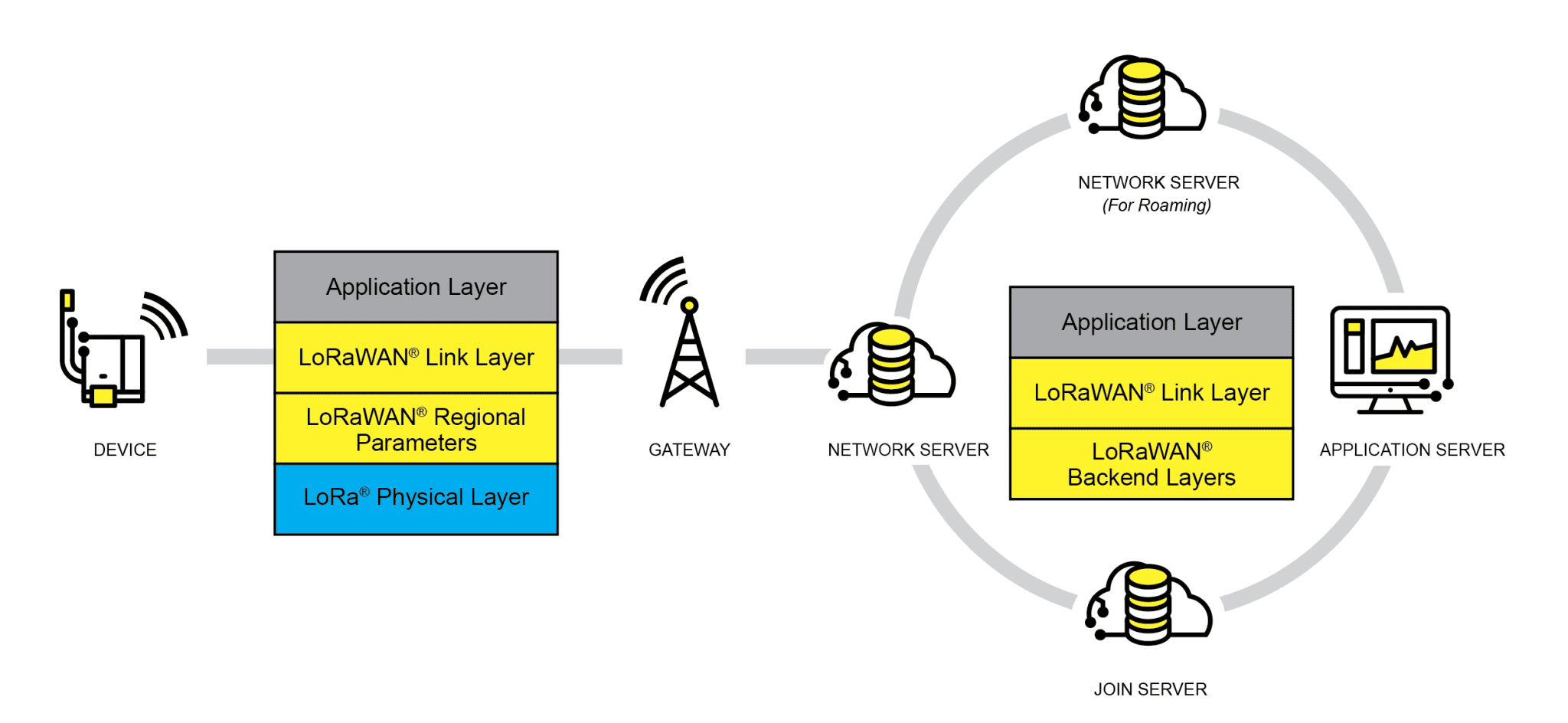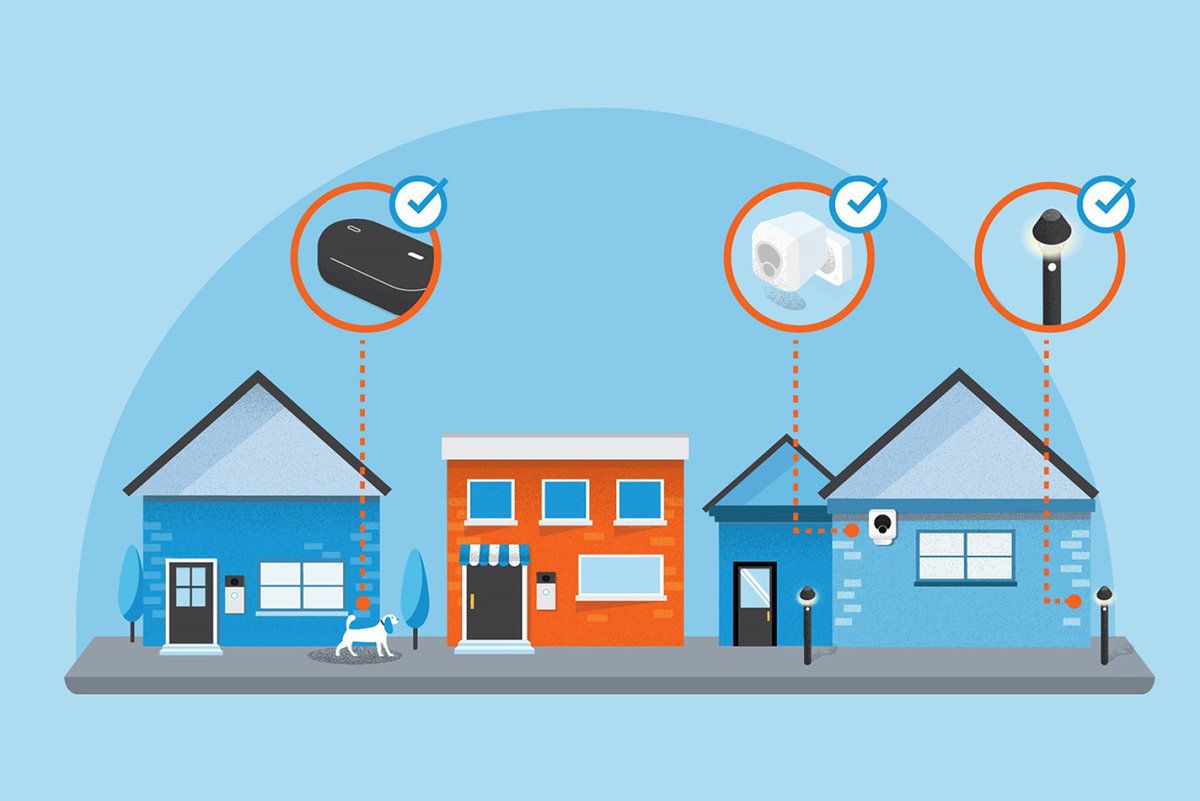It is common to speak about LoRa or Long Range communication radios, in relation with IoT devices. Particularly, in today, we concentrate on LoRaWAN. However, do you truly understand the significance of LoRaWAN is and, more important, why it is essential to the IoT? This guide will help you understand about both.
What is LoRa?
As mentioned, LoRa stands for long-range. Consider the range of your ordinary, modern-day wireless home network. In America, in the U.S., LoRa networks generally use spectrum within the unlicensed 900 MHz band. In the best case circumstance. The distances LoRa signals can travel exceed 700km. However, LoRa signals can be extended to as far as 10 miles in open, flat regions, while extending three miles or more in cities. It is the LoRa Alliance can be composed of member companies who develop, modify, and apply and implement the LoRaWAN standards.
But wait, what do you mean that cellular networks don't reach as further? Absolutely! However, LoRa differs from LoRa in a number of ways.

It is the first to mention that it uses spectrum that is not licensed to transmit data. Cellular networks make use of licensed spectrum, which means companies that operate them have agreed in order to "own" those airwaves. The cost can be within the trillions. If you want to connect to a cell network, you'll need to pay the service provider. This is the case on your smartphone or tablet, as an instance.
Utilizing unlicensed spectrum, the cost of networks is less in both terms of the operator and those devices connected to that network. Thus, LoRa gives you the wide spectrum of a cellular network without the price.
LoRaWAN networks are also different in another manner: They're intended to transport small pieces of data and require low energy. The tiny amount of data makes them ideal for IoT devices, such as sensors. These devices typically transmit a handful of bits of data, and only once the data is changed.
The network you're using on your phone? It's designed to handle a lot of data, like videos and consume more power. If your smartphone's battery has had a problem prior to the end of the day, that's a part of the reason. Watch videos for a couple of hours on cellular networks and you'll be able to see the battery life diminish rapidly.
It is important to note that there are mobile network solutions specifically designed for IoT devices, which are designed to transfer small amounts of data using less energy. For instance, think Cat-M1 that many providers provide as a service to IoT devices. Connectivity costs are lower than the data rates of cellular networks, however they do add up over time or in the case of hundreds of devices connected.
What is the process by which LoRaWAN data reach the internet?
In LoRa, we can have cheap long-range, high-speed networks for IoT devices to transmit their data. What is the best way to ensure this IoT data make it to the internet to be beneficial? This is the reason why the cell model is turned upside down.

Consider the Helium LoRaWAN network. People create an Helium hotspot that provides a broad spectrum of coverage for IoT devices that can be connected to the network. The hotspots are physically linked to the home network that is in turn coupled to an ISP to access the internet. Sensors and devices on the Helium network transfer all their information and data over LoRaWAN to the nearest hotspot using LoRaWAN and the hotspot then transfers the data onto an area network, and then is then transferred onto the web.
Connecting the hotspot to the internet via a home network, connectivity, the owner provides the backhaul to LoRaWAN network.

Cellular networks operate on the same principles. The phone's 4G or 5G data is wirelessly transferred to a tower for cellular communications. The backhaul of the tower, or connection to internet is usually wired to the tower's base. However, this can be expensive. In addition to paying for the radio waves and the tower, the operator has to purchase the tower and the devices that convert wireless signals to wired, as well as the wired connection for internet access. LoRaWAN networks allow for decentralization and reduce the cost of these services.
Helium is only one LoRaWAN instance. There are many others, including Loriot, MachineQ, Senet as well as The Things Network to name only a few. Since they utilize LoRaWAN, the LoRaWAN protocol, they are able to expand coverage by negotiating roaming agreements. Helium as well as Senet recently came up with an agreement for roaming for instance. These network providers do not rely on a person's home internet connection to backhaul.
In contrast, similar to cell networks, they've invested in backhaul connections, which can result in some additional cost for devices that are connected to networks. The cost is usually lower than what a conventional mobile network is however. This is due to the fact that these providers don't have to pay for wireless radio waves.
Others have attempted to do it on their own by implementing different low-power wide-area network (LPWAN). The French-based Sigfox is perhaps the most effective example, having begun its LPWAN initiatives in the year the year 2010. In the moment, Sigfox is in receivership and is comparable to the process of filing Chapter 11 bankruptcy here in the U.S.
How does Amazon Sidewalk fit into all of this?
In terms of being a solo operator Amazon's Sidewalk initiative is exactly that an attempt to offer an extensive low-power wide-area network (LPWAN) for devices that have been certified. Amazon will likely allow Sidewalk to device manufacturers in the near future. In the meantime you're mostly looking at Ring-branded sensors, other Amazon devices, as well as devices made by select partners. It's due to the fact that Amazon doesn't use its LoRaWAN standards.

The general strategy that Sidewalk follows Sidewalk follows the same principles as the ones that use standards however. Sidewalk devices transmit little bits of data across the frequency 900 MHz but additionally use Bluetooth to do this. The way for this data to be transferred to the Internet is only available to Amazon Echo devices, which are already connected to users homes networks. From there, the data is transferred to the internet via the consumer's ISP connection. Customers pay for and cover the backhaul.
Why is it that Amazon in the end seeking to create its own solution instead of making use of LoRaWAN? LoRaWAN standard? Amazon is planning for the long term. The data from devices will not cost nothing to transfer, which is unlike other LoRaWAN services currently. The data will also be combined into AWS that adds customers to AWS's expanding cloud-based services. Consider it an alternative to a data lock-in method that is made more appealing thanks to the free data transfer.
This is a risky strategy, however it comes with risks. There won't be roaming contracts with the other LoRa and LoRaWAN networks. In Sidewalk, in Sidewalk, Amazon is trying to make use of home networks as backhaul, similar to Helium. However, there's one major distinction.
When you purchase an Helium hotspot it's to provide an internet connection to IoT devices. Amazon is merely using thousands of Echo devices it has sold to do the exact thing. It's true that certain Echo users aren't thrilled about it. It will be interesting to see whether Amazon's strategy is successful or if it allows Sidewalk towards a standard-based method of operation.
No matter what network method LPWANs can provide the kind of connectivity that IoT devices require and provide it at a cheaper cost than other alternatives. This is exactly what we'll need when the anticipated millions and billions connected devices go out over the next few years.

